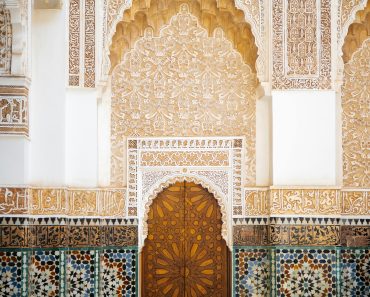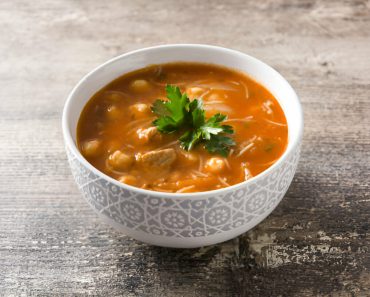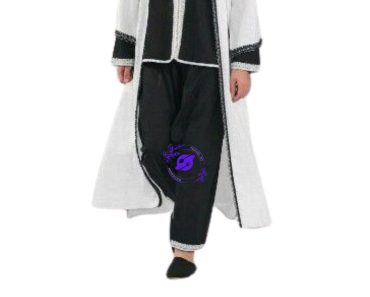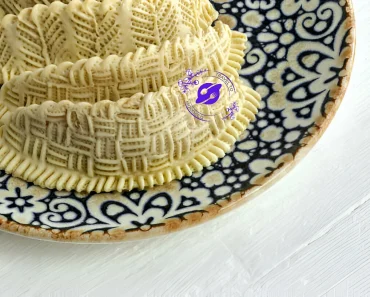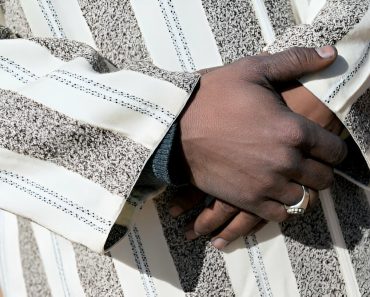
Moroccan culture
The Elegance of : Wearing Moroccan Clothing
Embracing Tradition: Wearing Moroccan Clothing
Discover the rich cultural tapestry of traditional Moroccan clothing and Wearing Moroccan Clothing, where every stitch tells a story. Dive into the beauty and history of these iconic garments.
Hey there! Are you ready to take a colorful journey into the world of traditional Moroccan clothing? These aren’t just clothes; they are a vibrant celebration of Morocco’s rich cultural heritage. From the bustling souks of Marrakech to the serene landscapes of the Atlas Mountains, Moroccan traditional wear is as diverse and enchanting as the country itself. Let’s talk about why these garments are more than just attire but a way of life.
Table of Contents
|
N° |
Headings |
|
1 |
Introduction to Wearing Moroccan Clothing |
|
2 |
The Djellaba: Confort Meets Culture |
|
3 |
The Caftan: Elegance in Every Stitch |
|
4 |
The Takchita: Layers of Luxury |
|
5 |
The Gandoura: Casual Yet Cultured |
|
6 |
The Tarbouche: A Touch of Tradition |
|
7 |
Fabrics and Materials: A Sensory Journey |
|
8 |
Colors and Patterns: A Visual Symphony |
|
9 |
Traditional Accessories: The Finishing Touches |
|
10 |
Occasions for Wearing Moroccan Clothing |
|
11 |
Modern Influences on Moroccan Attire |
|
12 |
Preserving Tradition: The Role of Artisans |
|
13 |
How to Wear Moroccan Clothing Today |
| 14 |
The Global Influence of Moroccan Fashion |
| 15 |
Conclusion |

Wearing Moroccan Clothing
Imagine walking through a lively market, the air filled with the scent of spices and the sound of melodious Arabic music. Now, picture the people dressed in an array of stunning garments, each piece telling a tale of historical grandeur and artisanal craftsmanship. This is the essence of traditional Moroccan clothing. It’s not just about fashion; it’s about a deep-rooted identity and pride in Moroccan heritage.
The Djellaba: Comfort Meets Culture
What’s the most iconic Moroccan garment you ask? It’s the Djellaba. This long, loose-fitting robe is perfect for both the scorching heat of the Sahara and the mild winters of the north. With a hood called a ‘kob’, the Djellaba is as practical as it is picturesque, especially during Morocco’s unpredictable sandstorms.
The Caftan: Elegance in Every Stitch
The caftan is royalty among Moroccan attire. Traditionally worn by women, this floor-length garment is a staple at major events like weddings and Eid celebrations. Intricate embroidery, often in gold or silver thread, enhances its elegance, making every woman feel like a queen.
The Takchita: Layers of Luxury
Speaking of weddings, the Takchita is the showstopper. A two-layered dress, it epitomizes Moroccan craftsmanship. The inner layer is simple, yet the outer layer dazzles with its elaborate designs and luxe fabrics, tailored for celebrations.
The Gandoura: Casual Yet Cultured
Then there’s the Gandoura, the less formal cousin of the Djellaba. Typically sleeveless and lighter, it’s popular in the warm Moroccan summers. Both men and women wear this comfortable yet stylish attire for everyday activities.
The Tarbouche : A Touch of Tradition
Ever seen a red, cylindrical hat on a Moroccan? That’s the Tarbouche, also known as the Fez. Though less common today, it’s an undeniable symbol of Moroccan national pride and heritage.
Fabrics and Materials :
A Sensory Journey:
Moroccan garments aren’t just about the cut; it’s also about the feel. Silks, cottons, and wool are commonly used, sourced locally to support traditional industries. Each material is chosen not only for its texture but for its ability to reflect the Moroccan climate and lifestyle.
Colors and Patterns:
A Visual Symphony:
The vibrant colors and intricate patterns you see in Moroccan outfits are inspired by the country’s diverse geography and history. From the blue of Chefchaouen to the reds of the Sahara, these garments are a painter’s palette.
Traditional Accessories
The Finishing Touches:
No Moroccan outfit is complete without accessories. Beautifully crafted belts, ornate jewelry, and hand-stitched leather bags add a touch of personal style and cultural flair.
Wearing Moroccan Clothing on special occasions
Whether it’s the holy month of Ramadan, a local festival, or a family gathering, traditional wear plays a key role in Moroccan celebrations. Each garment has its moment to shine.
Traditional Moroccan clothing isn’t just beautiful—it’s deeply symbolic and worn with pride during many significant events. Here’s how these gorgeous garments fit into various aspects of Moroccan life:
Religious Celebrations:
In Morocco, religious observances are prime times for donning traditional attire. During Ramadan and especially for Eid al-Fitr and Eid al-Adha, men, women, and children dress in their finest traditional wear. Women may choose elegant caftans and men often opt for clean, crisp djellabas.
Weddings:
Moroccan weddings are a lavish affair and a spectacular showcase of traditional garments and Various Moroccan dishes . Brides often wear a Takchita or a Caftan, sometimes changing outfits multiple times throughout the celebration. The groom might wear a richly decorated Djellaba or a suit with Moroccan elements.
Festivals:
Morocco’s calendar is dotted with festivals, many of which are specific to certain towns or regions. Events like the Imilchil Marriage Festival in the Atlas Mountains are steeped in tradition, with locals Wearing Moroccan Clothing specific outfits that tell stories of their heritage.
National Holidays:
On days of national pride, such as Throne Day, Moroccans often Wearing Moroccan Clothing to celebrate their identity and history. This is a time when the streets are filled with color and the vibrant spirit of the nation.
Family Gatherings:
For many Moroccans, family gatherings and social visits are opportunities to honor their culture. It’s common to dress in traditional attire during these times, particularly during special meals or during the holy month of Ramadan.
Public Holidays and Official Events:
During public holidays like Independence Day, and at official events, it’s customary for Moroccan officials and many citizens to wear traditional dress as a sign of.
Modern Influences on Moroccan Attire
Today’s Moroccan fashion scene is a blend of tradition and contemporary styles. Young designers are reimagining traditional outfits with modern twists, making them relevant for today’s fashion-savvy generation.
Traditional Moroccan clothing, with its intricate designs and deep cultural roots, has not been left untouched by modern influences. As the world becomes more interconnected, Moroccan attire has embraced new trends while retaining its unique heritage. Let’s explore how contemporary elements are weaving their way into the fabric of Moroccan fashion.
Integration of Contemporary Fashion Trends
Today’s Moroccan designers are melding traditional motifs with contemporary fashion trends to create fresh, modern looks. For instance, younger Moroccans might wear a Djellaba but with updated cuts, lighter materials, or vibrant, unconventional colors. This blend keeps traditional wear relevant and appealing to a new generation that values both style and heritage.
Use of New Fabrics and Technologies
Advances in textile technology and the introduction of new materials have also left their mark on traditional Moroccan clothing. Synthetic fibers that mimic the feel of natural materials, yet offer more durability and comfort, are increasingly used. Moreover, digital embroidery and printing have made intricate designs more accessible and versatile, allowing for more detailed and varied patterns that were difficult to achieve with traditional hand embroidery.
Global Fashion Influence
Global fashion trends have also impacted Moroccan attire, particularly through the media and Moroccan diaspora. Elements from European and American fashion are often incorporated into traditional designs. For instance, some Moroccan women may pair a caftan with Western-style belts or bags, blending Moroccan craftsmanship with global fashion trends.
Eco-conscious and Ethical Fashion
There’s also a growing trend towards sustainability in fashion, and Moroccan attire is part of this movement. Artisans and designers are increasingly focusing on eco-friendly practices, using organic materials and promoting fair trade to ensure that the production of traditional garments contributes positively to both society and the environment.
Designer Collaborations and Runway Shows
Moroccan traditional attire has found its way onto international runways through collaborations between local designers and international fashion houses. These collaborations help to put Moroccan fashion on the global map and ensure that traditional designs continue to evolve and resonate with a global audience.
Influence of Pop Culture and Celebrities
Pop culture and celebrity influence have also played a significant role in popularizing Moroccan traditional wear. International celebrities wearing Moroccan-style clothing at high-profile events have boosted its global appeal, encouraging a broader audience to appreciate and adopt Moroccan garments.These modern influences ensure that traditional Moroccan clothing is not just a relic of the past but a living, evolving form of expression that resonates with the global trends while staying true to its roots. This evolution keeps Moroccan heritage vibrant and relevant, ensuring its place in both national and global fashion landscapes for years to come.
Preserving Tradition

